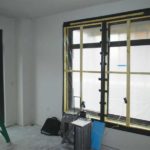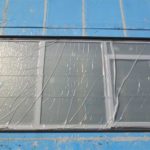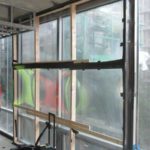Referencing and specifying fenestration field-testing
by Katie Daniel | June 2, 2017 9:46 am
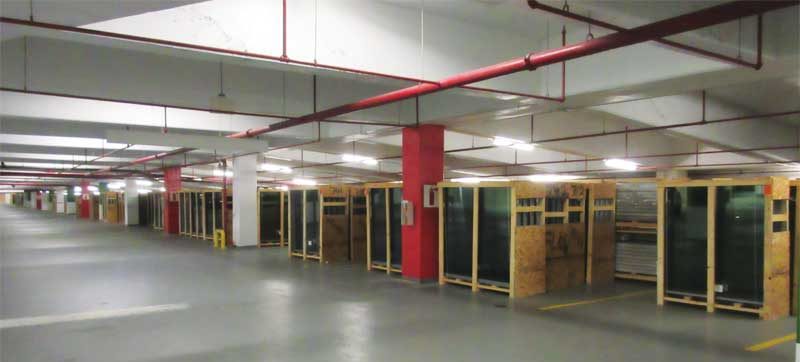 [1]
[1]by Evan Landis, PE, Chrystal Chern, and Anthony J. Nicastro, PE
Fenestration products come in a wide variety of forms, ranging from window units manufactured in a production facility to custom ‘stick-built’ curtain wall products that are assembled in the field.
Each fenestration component provided for a project is required
to meet performance requirements set forth by the specifications.
Conducting quality control (QC) testing of installed fenestration products while construction is ongoing helps limit the potential for performance issues after the building is occupied. By following
a very carefully developed testing program, project teams are able to check the submitted and installed product meets the project-specific performance requirements.
The architecture, engineering, and construction industry relies on the American Architectural Manufacturers Association (AAMA) for fenestration guidelines regarding product ratings for anticipated performance, installation and integration with adjacent assemblies, and field-testing methods and procedures. AAMA’s constituency includes manufacturers, suppliers, testing laboratories, and related professionals; its advice is often collected into consensus-based standards meant for industry reference and guidance. AAMA produces a wide variety of standards—this article highlights some that address QC field-testing intended to verify fenestration performance for new construction projects.
Selecting a QC testing program suitable for a project, and then accurately incorporating it into the project specifications to include AAMA standards, can be a daunting and potentially confusing task. Testing incurs a cost, so sample size and rigor should be not only founded on sound industry guidance and practice, but also thoughtfully balanced for the project’s scale and complexity. A poorly defined or insufficiently thorough testing program can leave the installation unchecked and potentially allow performance issues to remain undetected during the construction process. Problems may then be discovered after occupancy, when the expense and disruption of necessary remedial repairs are elevated.
A well-defined and executed quality control testing program for fenestration allows project teams to verify the performance of selected products and have reasonable confidence the installed work completed during ‘production mode’ meets project requirements.
This article outlines applicable standards for:
- specification and testing of newly installed fenestration products;
- incorporation of applicable standards with the project specifications; and
- interpretation of results.
This article does not address diagnostic testing of new or existing windows with leakage issues, to which AAMA 511, Voluntary Guideline for Forensic Water Penetration Testing of Fenestration Products, and ASTM E2128, Standard Guide for Evaluating Water Leakage of Building Walls, apply.
While this article addresses testing programs set forth by AAMA, the design team may choose to specify quality control testing using the applicable testing standards from ASTM instead. A testing program built around those standards may include different test pressures desired by the specifier, but development of such a program requires careful attention to specification language to ensure testing requirements are clear.
Industry guidance and standards
In general, testing standards for field quality control are divided by product type and testing of new or existing fenestrations. For new construction projects, the following are applicable:
AAMA 101
AAMA 101, North American Fenestration Standard/Specification for Windows, Doors, and Skylights, establishes performance levels for windows, doors, and unit skylights (it excludes curtain wall and storefront products) and describes means of testing and rating in a laboratory setting. (For the purpose of clarity, this article omits discussion of unit skylights.)
Based on the anticipated use and corresponding performance expectations, windows and doors are generally qualified by one of four Performance Classes:
- Residential (R);
- Light Commercial (LC);
- Commercial (CW); and
- Architectural (AW).
AAMA 101 describes gateway requirements for Performance Grades (PGs) such as design, structural test, and water penetration resistance test pressures for each Performance Class. Window and door products are also designated by optional Performance Grades that exceed the gateway requirements and include an increased design pressure in 240-Pa (5-lb/sf) increments.
AAMA 502
AAMA 502, Voluntary Specification for Field-testing of Newly Installed Fenestration Products, provides recommendations for field verification testing of window and door products for air leakage and water penetration resistance. The test includes a chamber sealed to a window or door specimen that is used to apply a differential pressure across the fenestration assembly (Figure 1). This is sometimes referred to as ‘chamber testing.’
AAMA 502 includes applicable ASTM standards by reference. The first is ASTM E783, Standard Test Method for Field Measurement of Air Leakage Through Installed Exterior Windows and Doors, which provides information regarding test apparatus setup, component calibration, test execution, and calculation of results for air infiltration resistance testing (Figure 2). The other, ASTM E1105, Standard Test Method for Field Determination of Water Penetration of Installed Exterior Windows, Skylights, Doors, and Curtain Walls, by Uniform or Cyclic Air Pressure Difference, offers information regarding setup of the test apparatus, calibration of components, and execution of water penetration resistance testing (Figure 3).
ASTM E1105 includes two test procedures. Procedure A conducts the test under uniform and constant differential pressure for a 15-minute duration, whereas Procedure B conducts the test in five-minute cycles with a one-minute period of zero pressure after each cycle. (Selection of the most appropriate procedure based on fenestration type is described later in this article.)
AAMA 503
AAMA 503, Voluntary Specification for Field-testing Newly Installed Storefronts, Curtain Walls, and Sloped Glazing Systems, is similar to AAMA 502 in that it includes field verification testing of fenestration products for air leakage and water penetration resistance. However, in this case, the standard is specific to engineered products not governed by AAMA 101, such as curtain walls, storefronts, and sloped glazing systems. AAMA 503 also includes ASTM E783 and ASTM E1105 by reference.
AAMA 501.2
AAMA 501.2, Quality Assurance and Diagnostic Water Leakage Field Check of Installed Storefronts, Curtain Walls, and Sloped Glazing Systems, is a test procedure intended to evaluate the performance
of system components intended to be watertight through use of a calibrated nozzle to apply a stream of water onto fenestration components (Figure 4). This type of testing is sometimes referred to as ‘nozzle testing.’ However, it is not appropriate for windows, doors, or operable vents glazed into curtain wall or storefront systems that have an AAMA Performance Class rating.
Specifying a program for new construction
For most new construction projects, the designer produces contract documents that include a specification section for each fenestration type being used on the project. For example, a specifier may select a window product of appropriate Performance Class and Grade to meet the project performance requirements, including design wind pressures, water penetration resistance, and allowable air leakage.
Window specifications should require a minimum Performance Class and Grade for each window system based on the AAMA 101 rating system once the design loads are determined based on American Society of Civil Engineers (ASCE) 7, Minimum Design Loads for Buildings and Other Structures (e.g. by analytical design or wind-tunnel procedure). The minimum PG-rated pressure must be greater than the code-required design pressure. However, selecting a product exceeding the code minimum requirements in PG may help a specifier achieve higher performance levels in categories such as water penetration resistance, when project performance expectations are elevated and tolerance for water leakage is low.
For simplicity, designers often specify the same optional PG for all windows on a project, based on the most conservative value corresponding to the area of the highest exposure and wind pressure. Performance Class and Grade affect how the windows are tested in the field, including test pressures and test types.
For engineered fenestration products, the specifications can include a performance-based or product-based specification. The former should list all performance requirements required to be met by the provided fenestration system (e.g. structural design pressures, deflection limitations, air infiltration, and water penetration resistance). The provided parameters will be used by the engineer or manufacturer during design or selection of the fenestration system. If using a product-based specification, the architect should include a basis of design product in the specifications that meets the project’s performance requirements. This specified system will be used as the basis for evaluating alternative fenestration systems, if submitted by the contractor.
Field quality control most often includes air infiltration and water penetration resistance tests. Specification sections should include a total number of water penetration resistance and air infiltration resistance tests that must be successful, as well as clarify who is responsible for testing and costs. Typically, an independent third party is hired to conduct testing.
Sample size
Picking an appropriate field-testing sample size
is an important step to learning enough about product performance to understand the likelihood of success while minimizing cost impact to the project. AAMA provides guidelines for how to specify a sample size. The guidelines from each standard are summarized below.
AAMA 502
AAMA 502 lists three tests as the default quantity, but states the amount of testing can increase or decrease depending on project size and allowable budget for testing. AAMA 502 references ASTM E122, Standard Practice for Calculating Sample Size to Estimate, with Specified Precision, the Average for a Characteristic of a Lot or Process, for additional guidance on establishing the required number of tests.
AAMA 503
AAMA 503 provides a single 9.3-m2 (100-sf) test area as the default specimen, noting it should “include perimeter seals, typical splices, frame intersections, and, if applicable, at least two entire vision lites and two entire spandrel lites containing an intermediate vertical and an intermediate horizontal.” AAMA 503 again states the specimen size depends on the project size and allowable budget for testing. It references ASTM E122 for additional guidance on establishing the required number of tests.
AAMA 501.2
AAMA 501.2 lists a 9.3-m2 (100-sf) test area as the minimum, stating it must include “perimeter caulking, typical splices, frame intersection, and if applicable, at least two entire vision lites and two entire spandrel lites containing an intermediate vertical member and an intermediate horizontal member.”
Sample size should also consider the variety of fenestration types. In the experience of this article’s authors, sample sizes may range from one percent for commercial projects with repetitive window types to approximately four or five percent for a smaller project with more unique fenestration types or configurations. On average, typical test programs may include:
- approximately two percent of the total number of fenestration units according to AAMA 502;
- two percent of the total curtain wall and storefront square footage according to AAMA 503; and
- two percent of the total curtain wall and storefront mullion length according to AAMA 501.2.
For small projects, AAMA’s prescribed minimums may control the sample size.
If possible, the testing sample should incorporate multiple window types, configurations, and installation conditions; it should occur at regular intervals to verify workmanship quality remains consistent throughout the project. Both AAMA 502 and 503 recommend conducting testing as soon as feasible, and at five, 50, and 90 percent completion. Performing testing as soon as feasible helps the project team understand initial performance of the fenestration product prior to wholesale installation (preferably via a mockup before product is delivered to the site). Likewise, testing throughout installation is needed to ensure installation quality remains constant.
Test procedures
Test procedures are contained in each AAMA standard. Specifiers must be diligent in specifying the correct standard for a given product, and select procedures based on product type. Both AAMA 502 and 503 reference ASTM E783 for air-infiltration testing using static air pressure difference, and ASTM E1105 for resistance to water penetration using static air pressure difference. Wherever possible, specifiers should endeavor to use current industry standards and avoid referencing specific revisions of the standards (e.g. AAMA 502-08) to prevent potential confusion from changes between the superseded standard and the active one.
For example, ASTM E1105 describes two procedures for water testing. Procedure A uses a uniform static air pressure difference, and Procedure B employs a cyclic static air pressure difference. Specifiers often confuse Procedure A and B, as described in ASTM E1105, with Method A and B from a superseded version of AAMA 502.
Method A and B described in previous versions of AAMA 502 (i.e. 2002 and earlier) prescribe two different ways of constructing the test pressure chamber. Method A omitted the perimeter sealant joint around the fenestration product from the test chamber, whereas Method B includes the perimeter seal within the chamber. Method A was eliminated in the 2008 revision, and Method B is the only remaining option.
Specifiers should select the desired ASTM E1105 procedure, A or B, based on AAMA guidelines. AAMA 502 Paragraph 5.3 requires Procedure B, “cyclic static air pressure difference,” except for AW windows, which should be tested using Procedure A, “uniform static air pressure difference.” AAMA 503 Paragraph 4.3 requires Procedure A for all tests.
Fenestration assemblies including multiple products in one assembly may require the specification of multiple AAMA standards or procedures appropriate for each product in the assembly. For instance, AAMA 501.2 is appropriate for curtain wall mullion testing, but is inappropriate for operable vents set within the curtain wall framing. For curtain walls with operable vents, specifiers should reference AAMA 501.2 or AAMA 503 for the curtain wall, but AAMA 502 for the operable vent. The fixed curtain wall and the operable vent may also have separate performance requirements, which should be clearly outlined in the specification’s testing procedure section.
Test pressures
Specifications should outline pressures appropriate for
each product’s anticipated performance. AAMA provides guidelines for both air infiltration testing and water penetration resistance testing.
Air infiltration test pressure and air leakage rates
For air infiltration testing of fenestrations, AAMA 502 requires the field-test pressure for air leakage resistance be equivalent to the test pressure originally used in the laboratory to test the product or achieve a laboratory performance rating according to AAMA 101. Additionally, AAMA 502 requires air leakage testing to be conducted at a minimum uniform static test pressure of 75 Pa (1.6 psf), or as specified for the project, but the test pressure is not to exceed 300 Pa (6.2 psf). Air-leakage rates for field-testing are allowed to be 1.5 times the rate for the applicable product type and Performance Class unless otherwise specified.
AAMA 503, which describes testing for curtain wall and storefronts, provides an optional air leakage test with the same guidelines for minimum and maximum static test pressures as those required by AAMA 502. AAMA 503 states the field-test pressure shall be tested at a minimum 1.6 psf or as specified, but not to exceed 6.2 psf. The allowable air leakage rates for field-testing shall not exceed the greater of 1.5 times the project specified rate or 0.5 L/s-m2 (0.09 cfm/sf).
Air infiltration testing is only appropriate for discrete curtain walls or storefronts, as air leakage testing is not feasible for continuous curtain walls where test areas not easily compartmentalized (i.e. continuous mullions or frame elements extend beyond the test area and allow uncontrolled airflow, making accurate measurement of air leakage through the assembly impractical).
Water resistance testing pressure
AAMA 502 requires the test pressure of the water penetration resistance chamber to be conducted at a static test pressure equal to two-thirds of the tested and rated laboratory performance test pressure, as indicated by the applicable product designation in AAMA 101, unless otherwise specified by the design team. The one-third reduction in test pressure is often perceived as an allowance for imperfections of field construction, while still within tolerances, versus testing conducted in a laboratory setting. If ASTM E1105 is specified rather than AAMA 502, the one-third reduction in pressure stipulated by AAMA is not applicable unless specficially addressed otherwise in the project specifications.
AAMA 503 similarly stipulates water penetration resistance tests at a static pressure of two-thirds the specified project water penetration test pressure, but not less than 200 Pa (4.18 psf). If a specification omits a test pressure, AAMA 503 requires testing be conducted at 20 percent of the positive design wind load multiplied by 0.667, unless otherwise specified by the design team.
AAMA 501.2 requires the water pressure at the nozzle inlet be between 205 and 240 kPa (30 and 35 psi), and notes the pressure may be as low as 170 kPa (25 psi)—provided this is approved by the specifier and the exception is noted in the test report.
In Section 0.2.5.1, AAMA 101 states “For U.S. applications, the water penetration resistance test pressure for all products is never more than 580 Pa (~12.11 psf).” By some specific interpretations, the lab test pressure for product rating per AAMA 101 (i.e. the product’s Performance Class and Grade) may be capped at 580 Pa (12.11 psf), and the field-test pressure reduction prescribed by AAMA 502 still taken.
Outcomes
The outcome of the quality control testing is either pass or fail: if the measured air infiltration rate is less than the specified threshold, the product passes. For water-penetration-resistance testing, specifications often require that testing produce no uncontrolled leakage at the given test pressure. However, the outcome of testing is often subject to debate because ‘leakage’ is poorly defined.
Pass/fail criteria and a leakage definition must be clear in the specifications to limit the potential for situations requiring further interpretation. Specifiers have freedom to define pass/fail criteria to meet their expectations, while design professionals use multiple definitions for water leakage.
AAMA 502 defines water leakage as:
the penetration of uncontrolled water beyond a plane parallel to the innermost edges of the product and that indisputably originates from the fenestration product.
AAMA 503, on the other hand, defines it as:
water that is not contained in an area with provisions to drain to the exterior or the collection of more than 0.5 oz. [14 g] of water during the 15 min. test period on top of an interior horizontal framing member surface. Any water present shall not extend beyond a plane parallel to the glazing intersecting the innermost projection of the test specimen, not including interior trim and hardware, under the specified conditions of air pressure difference across the specimen.
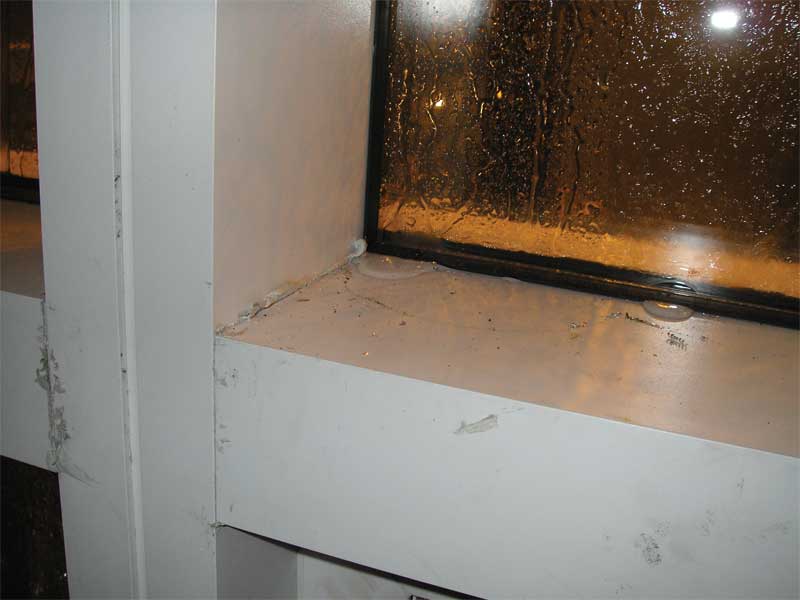 [6]
[6]Figure 5 shows the test.
AAMA 501.2 defines water leakage as:
any uncontrolled water that appears on any normally exposed interior surfaces, this is not contained or drained back to the exterior, or that can cause damage to adjacent materials or finishes. Water contained within drained flashing, gutters, and sills is not considered water leakage. The collection of up to 0.5 oz [14 g] of water in a five-minute test period on top of an interior stop of stool integral with the system shall not be considered water leakage.
AAMA 502 allows for collection of water on horizontal surfaces of the window assembly as long as the water does not flow over the edge of the surface onto interior finishes, whereas AAMA 503 and 501.2 limit the amount of water that collects on horizontal surfaces to 14 g (0.5 oz). Despite these definitions, end-users and owners may object to water that collects on interior surfaces of the fenestration product. The project team should discuss the ‘leakage’ definition during the drafting of the specifications to ensure the included definition meets the project team’s expectations.
Consequences of failure
Should a failure occur, AAMA 502 and 503 require forensic testing methods to follow AAMA 511, which references ASTM E2128. AAMA 502.1 requires the contractor implement a repair that is acceptable to the architect and/or owner’s representative and retest the location to ensure the repair
is effective. If the remedial repair is not effective, the contractor must provide repairs and retest until the test results are satisfactory.
AAMA 502 and 503 do not provide guidance as to what is required once the point of leakage is determined. Commonly, the contractor may propose a repair (either local or systemic depending on the nature of the failure), and retest the fenestration after repair to verify its efficacy.
For each unsuccessful test, there should also be an additional test on another similar fenestration specimen to check whether the failure is applicable to multiple fenestrations on the project or only an isolated defect. Stipulating this progressive means of testing after failure increases the likelihood of identifying a systemic issue if it exists.
Conclusion
Quality control testing programs help owners validate installed fenestration assemblies before accepting the installation of an approved product on the building. A testing program can range in size and scope, but AAMA establishes minimum guidelines. Prudent owners and architects can use these guidelines to set forth testing requirements through project specifications, and then implement testing to understand the submitted and installed product’s performance relative to expectations.
Validating the initial installation is critical. It can alert the project team to performance issues early in the installation process, allowing for corrections to be made and limiting the potential for rework of fenestration units already installed. Once the project team is comfortable with the initial installation a well-devised testing program that includes periodic testing throughout construction will help ensure that installation quality remains constant. The testing program must also provide clear direction regarding number of tests, test parameters, and pass/fail criteria to prevent confusion during the construction period. Clear provisions for testing and execution in the field can help the project achieve successful installations.
Evan Landis, PE, is Staff II in the Building Technology Division at Simpson Gumpertz & Heger’s (SGH’s) Washington, D.C., office. He works on projects involving design, investigation, and renovations to building enclosures. He can be contacted at ejlandis@sgh.com[7].
Chrystal Chern is Staff I in the Building Technology Division at SGH’s D.C. office. She has consulted with architects, contractors, and building owners to identify construction defects related to water penetration issues for commercial and residential buildings. Chern can be contacted at cchern@sgh.com[8].
Anthony J. Nicastro, PE, is a senior project manager in the Building Technology Division at SGH’s D.C. office. He is experienced in the investigation, design, and construction contract administration of building envelope components for major commercial, educational, and residential buildings. Nicastro has consulted with architects, contractors, and building owners to analyze design concepts, evaluate construction defects, and develop repairs for water intrusion issues. He can be contacted at ajnicastro@sgh.com[9].
- [Image]: https://www.constructionspecifier.com/wp-content/uploads/2017/06/IMG_5553-e1496339940942.jpg
- [Image]: https://www.constructionspecifier.com/wp-content/uploads/2017/06/SANY1154.jpg
- [Image]: https://www.constructionspecifier.com/wp-content/uploads/2017/06/P1050775_rev.jpg
- [Image]: https://www.constructionspecifier.com/wp-content/uploads/2017/06/IMG_4919.jpg
- [Image]: https://www.constructionspecifier.com/wp-content/uploads/2017/06/101_3029.jpg
- [Image]: https://www.constructionspecifier.com/wp-content/uploads/2017/06/P1011392.jpg
- ejlandis@sgh.com: mailto:ejlandis@sgh.com
- cchern@sgh.com: mailto:cchern@sgh.com
- ajnicastro@sgh.com: mailto:ajnicastro@sgh.com
Source URL: https://www.constructionspecifier.com/referencing-and-specifying-fenestration-field-testing/
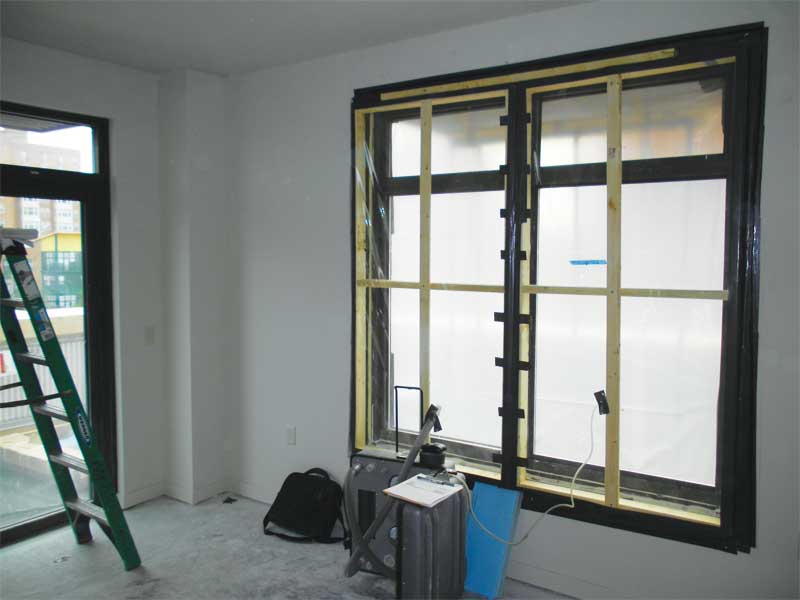 [2]
[2]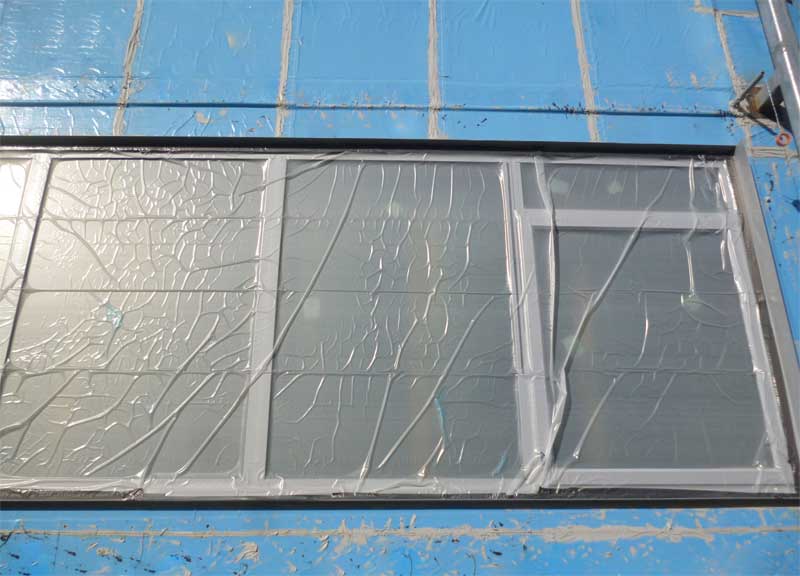 [3]
[3]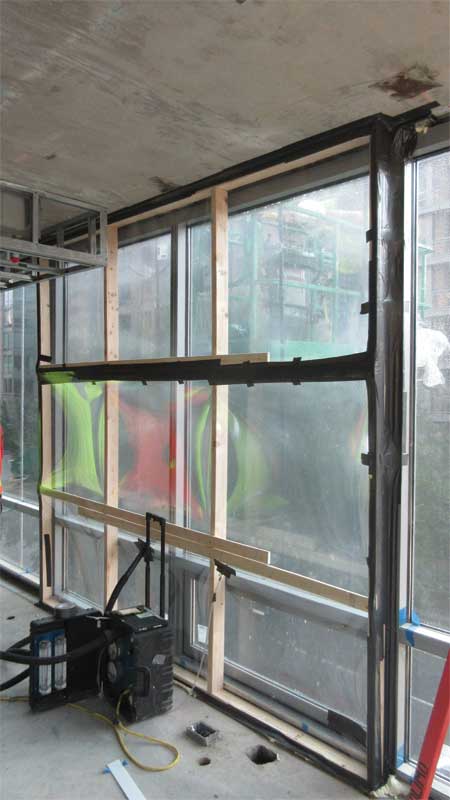 [4]
[4]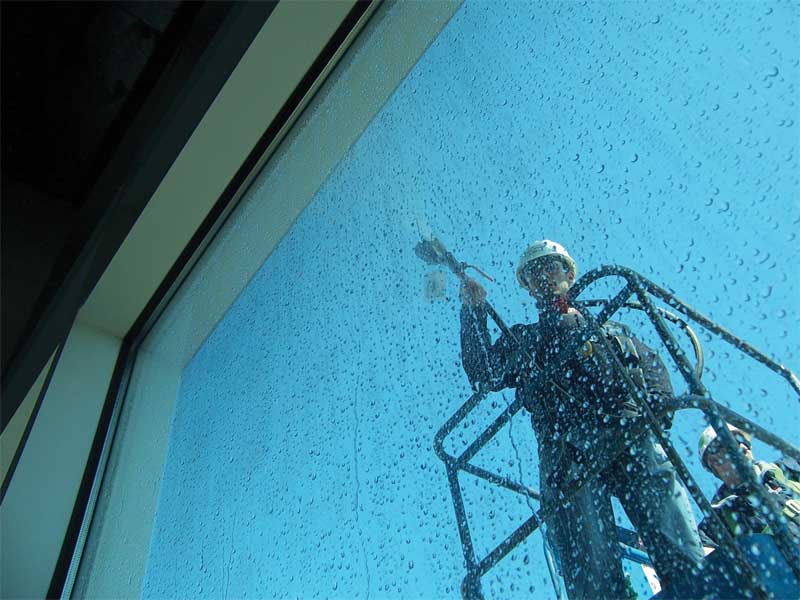 [5]
[5]